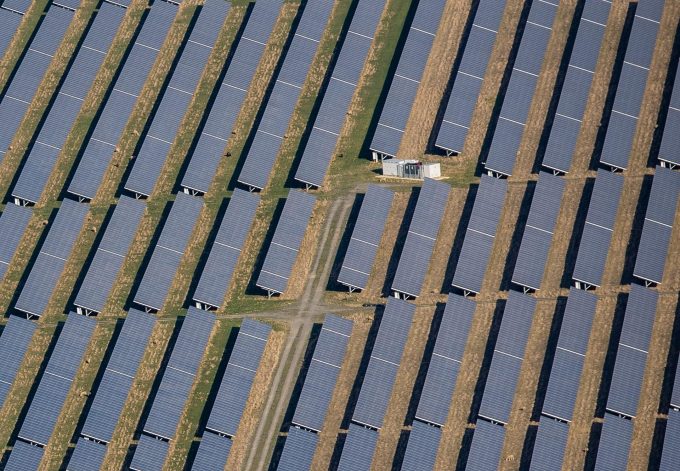NextEnergy Solar Fund (NESF) has released its annual results for the year ended 31 March 2025. The fund, which specialises in solar and energy storage assets, faced macroeconomic headwinds and lower power prices, contributing to a fall in NAV, but continues to deliver an attractive dividend and is making progress on strategic initiatives aimed at narrowing its discount.
NAV declines on lower power prices and operational pressures
NESF reported a 9.1% fall in NAV per share to 95.1p (2024: 104.7p), with the NAV total return negatively affected by lower short-term UK power price forecasts and weaker operational generation performance. Total income generated was approximately £73.2m, down from £80m in the previous year.
Electricity generation came in at 830GWh, 5.3% below budget, with weather conditions and network outages among the contributing factors. Installed capacity stood at 937MW across 101 operating assets.
Dividend maintained despite challenges
Despite the headwinds noted above, NESF’s board has maintained the company’s total dividend at 8.43p per share, which was fully cash-covered at 1.1x. The company reconfirmed its guidance for the current year, targeting the same dividend level, with expected cover of between 1.1x and 1.3x. As at 13 June 2025, NESF offered a dividend yield of around 12%.
Share buybacks and asset sales provide NAV uplift
During the year, NESF implemented a share buyback programme, repurchasing 15.1m shares for £11.2m, adding 0.5p to NAV per share. The trust also advanced its capital recycling programme, completing three asset sales totalling 145MW and raising £72.5m of capital. These sales added an estimated 2.76p per share to NAV.
The company has £60.1m available under its £205m revolving credit facility and a modest cash balance at the company level of £3.2m, providing flexibility for further buybacks or reinvestment.
Capital structure and gearing
Gearing increased slightly over the year, with total financial debt (excluding preference shares) of £292.1m and total gearing (including preference shares and look-through debt) at 48.4%, up from 46.4%. Around 70% of the trust’s debt is fixed rate, providing some insulation from rising borrowing costs.
The weighted average cost of capital rose to 6.6% (2024: 6.4%) and the portfolio discount rate remained broadly stable at 8.0% (2024: 8.1%).
Strategic review and adviser fee discussions underway
The board says it continues to apply a robust strategic framework to assess new opportunities and has retained independent advisers to help evaluate all potential paths forward. It confirmed that discussions are ongoing with the investment adviser regarding a revised fee structure to better align with shareholder interests.
A review of the investment management fee follows shareholder frustration over the persistent discount, which averaged around 27% over the period. The trust’s share price reached an all-time low discount in early 2025 but has since seen some recovery.
ESG progress and Article 9 classification retained
NESF has maintained its Article 9 classification under the EU’s Sustainable Finance Disclosure Regulation. It continues to promote biodiversity across its assets under its “Approach to Nature” strategy and has reaffirmed its commitment to ethical supply chains through the Solar Stewardship Initiative.
Separately, NESF has published its sustainability and ESG report for 2025 – click here to read more on that.
Strategic pipeline and power pricing outlook
NESF has identified a £500m pipeline of potential solar and battery storage investments across the UK and OECD countries. It will assess these opportunities against the potential returns of debt repayment and further share buybacks.
Power price assumptions were revised downward in the short term but increased in the medium to long term. A blend of four independent consultants’ projections is now used to reduce volatility in the valuation model.
Approximately 50% of NESF’s revenues are backed by RPI-linked government subsidies, with the remainder derived from its rolling PPA hedging strategy, which provides additional visibility and stability for cash flows.
[QD comment MR: NextEnergy Solar Fund continues to offer one of the highest dividend yields in the listed renewables space, and with the dividend cash covered and reconfirmed for the coming year, that remains a significant attraction. However, the 9% fall in NAV and the ongoing share price discount – despite recent buybacks and asset sales – reflect the broader challenges facing the sector, from falling power price forecasts to investor dislocation.
The board appears to be taking shareholder concerns seriously, with a clear emphasis on strategic flexibility, capital recycling, and now a review of the investment management fee. If discount narrowing is to be achieved, tangible progress on these fronts will be important. That said, nearly half of NESF’s revenues is subsidy-backed and it has a strong PPA strategy supporting the rest, which means the income stream looks well underpinned.
Against a backdrop of higher interest rates, the sector remains out of favour, despite the strong yields on offer and asset values continuing to be validated by transaction pricing. The discounts that are prevailing in the sector continue to look unjustified and so we think that NESF’s decision to not raise the yield any further (click here to read more on that) makes sense and we hope it will be able to look at buying back shares again instead.]
